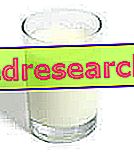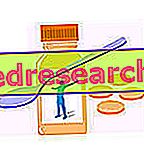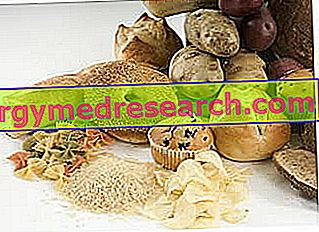Lactose is the problem of intolerance
Lactose intolerance is a condition in which the consumption of milk and dairy products causes a non-allergic reaction that manifests itself with gastrointestinal disorders such as bloating, cramps and occasional diarrhea.

The problem of lactose intolerance is more widespread among Asians and Orientals, while Europeans are generally more resistant than other populations.
| Average prevalence of lactase deficiency in various ethnic groups | |
| Ethnic group | Lactase deficiency (%) |
| swedish | 2 |
| Europeans | 4 |
| Swiss | 10 |
| North American Caucasians | 12 |
| Finns | 18 |
| Puerto Ricans | 21 |
| Italian | 40 * |
| Israelani | 61 |
| Mexicans | 71 |
| African-Americans | 75 |
| Black Africans | 75 |
| Arab | 81 |
| Aboriginal Australians | 85 |
| Eskimos | 88 |
| Bantu Africans | 89 |
| Chinese | 93 |
| Thai | 98 |
| Indian Americans | 100 |
| * prevalences are greater in southern regions than in northern regions | |
In some and rare cases, lactose intolerance may be due not so much to the deficiency of lactase as to the deficiency of the proteolytic enzymes necessary for the digestion of milk proteins.
Symptoms
To learn more: Symptoms Lactose intolerance
In the presence of a congenital or acquired deficiency of lactase, milk sugar cannot be digested and at intestinal level, being osmotically active, it accumulates by recalling liquids; this effect, associated with its fermentation by the local microbial flora, gives rise to the typical phenomena of lactose intolerance (meteorism, flatulence, diarrhea, nausea, exhaustion etc.); these symptoms appear quickly when you ingest foods that contain this sugar (milk, but also creams, cream, non-clarified butter, fresh cheeses and milk-based drinks).
Classification
Lactose intolerance can be primary or secondary and transient. In the first case the organism does not produce lactases due to a genetic defect, which is why the symptoms of intolerance manifest themselves already in early childhood. When this deficit does not exist, the body can still suffer from a transient intolerance, called secondary, due to the temporary loss of the enzyme. Infections or lesions of the gastrointestinal tract and sudden dietary mutations are the most common causal factors underlying this condition. Lactase, in fact, is considered an inducible enzyme, capable of increasing numerically in relation to the stimulation of its substrate. In other words, when the diet provides only a modest and occasional introduction of milk and dairy products, food stimulation can represent an insufficient stimulus for a synthesis of lactase suitable for temporary needs.
Even an undiagnosed celiac disease, due to the degenerative process that affects the intestinal surface assigned to the absorption of nutrients, can be the basis of a lactose intolerance.
Diagnosis
To learn more: Breath test or breath test
If lactose intolerance is suspected, it can easily be unmasked by the so-called breath test or breath test. Through this examination the concentration of hydrogen in the exhaled air is evaluated after a lactose load.
| Lactose content in the milk of some species of mammals | |
| WOMAN | 7.0 g / 100 ml |
| DONKEY | 6.2 g / 100 ml |
| MARE | 6.0 g / 100 ml |
| KVG | 5.3 g / 100 m |
| COW | 4.6 g / 100 ml |
| SHEEP | 4.4 g / 100 ml |
| GOAT | 4.4 g / 100 ml |
| CAMEL | 4.1 g / 100 ml |
| REINDEER | 2.4 g / 100 ml |
| SEA LION | 0.0 g / 100 ml |
Since the fermentation of undigested sugar produces hydrogen which is readily reabsorbed by the intestinal walls and eliminated by respiration, in the case of lactose intolerance, a peak concentration of hydrogen is observed in the expired air.
Care and therapy
To learn more: Drugs for the treatment of lactose intolerance
In the presence of a secondary lactose intolerance the first approach is to consume milk and dairy products in small quantities, and then gradually increase them in order to stimulate the production of lactase.
To allow the use of milk also to all those who suffer from intolerances against it, there are lactose-free milks in which lactose is found, for the most part (70-75%), already split into glucose and galactose. Alternatively, you can "settle" for soy milk or rice milk. Even yogurt, thanks to the fermentation of lactose made from the ferments it contains, is generally well tolerated. Finally, those suffering from lactose intolerance can benefit from the consumption of probiotic foods ("special" yoghurts or particular lyophilized lactic ferments).



